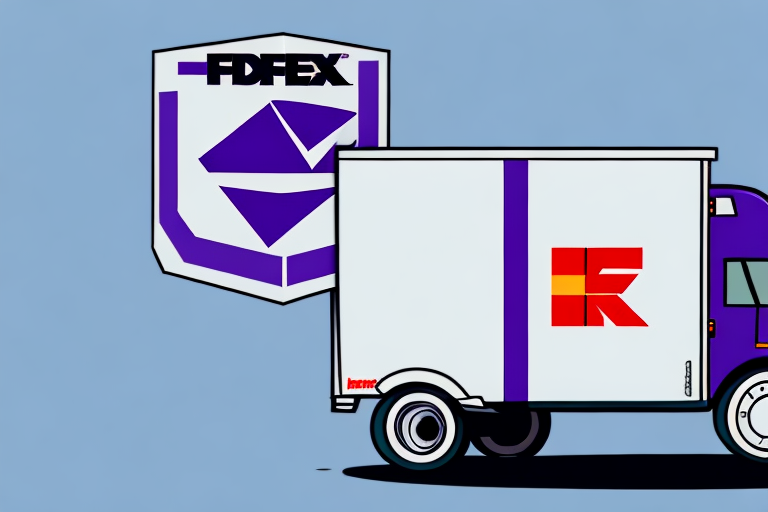Understanding FedEx Service Code Abbreviations
FedEx, one of the world’s leading shipping companies, offers a comprehensive range of services tailored to meet the diverse needs of businesses and individuals. To streamline communication and ensure precision in shipping operations, FedEx employs a system of service code abbreviations. This article explores these abbreviations in depth, highlighting their significance, functionality, common misconceptions, and best practices for effective utilization.
Importance of FedEx Service Code Abbreviations
Enhancing Efficiency and Reducing Errors
In the logistics industry, time is a critical factor. FedEx Service Code Abbreviations facilitate the swift communication of shipment details, such as delivery timelines and signature requirements. By using standardized codes, both shippers and recipients can minimize misunderstandings, reduce errors, and expedite the shipping process, ensuring timely and accurate deliveries.
Standardization and Tracking
These abbreviations provide a uniform system for tracking and monitoring shipments. Implementing service codes enables real-time tracking, allowing stakeholders to receive timely updates on shipment status. This standardization is crucial for identifying and resolving potential issues quickly, thereby reducing the risk of lost or damaged packages.
International Shipping Compliance
For international shipments, FedEx Service Code Abbreviations ensure compliance with varying global regulations and requirements. Utilizing these codes helps in meeting all necessary international shipping standards, which is vital for businesses aiming to serve a global customer base efficiently.
How FedEx Service Code Abbreviations Work
Structure and Functionality
FedEx Service Code Abbreviations are typically three-letter codes that encapsulate specific shipping features and requirements. These codes are entered into the “service type” field during shipment creation, enabling clear and concise communication of shipment specifics. For example, a code might indicate the priority level of the shipment or the type of packaging required.
Streamlining the Shipping Process
By adopting these abbreviations, shippers can convey essential information swiftly, leading to a more efficient shipping process. This reduces the likelihood of handling errors and delays, ensuring that shipments are processed and delivered smoothly.
Cost Efficiency
Selecting the appropriate service code can lead to significant cost savings. For instance, choosing a less urgent delivery code when overnight shipping is unnecessary can reduce shipping costs. This ensures that shippers pay only for the services they require, avoiding unnecessary expenses.
Common FedEx Service Code Abbreviations
FedEx offers over 100 different service code abbreviations, each serving a unique purpose. Here are some of the most commonly used codes:
- Priority Overnight (PO)
- Standard Overnight (SO)
- 2Day (2D)
- Express Saver (ES)
- Ground (GR)
Each code corresponds to specific shipment characteristics, such as delivery speed and packaging requirements. It is essential to consult FedEx resources or contact their customer service to ensure the correct service code is applied to each shipment.
Benefits of Using FedEx Service Code Abbreviations
Accurate Billing and Tracking
Utilizing service code abbreviations ensures that billing is accurate and reflective of the services used. This precision aids in transparent invoicing and prevents unexpected charges.
Automated Processing
Service codes facilitate automated shipment processing, enhancing overall efficiency. This automation reduces manual intervention, speeding up the shipping process and minimizing human error.
Improved Communication
Clear communication between shippers and recipients is paramount. Service codes provide a standardized language that improves understanding and coordination among all parties involved in the shipping process.
Best Practices for Using FedEx Service Code Abbreviations
Stay Updated with Code Changes
FedEx may update their service codes periodically. It is crucial to stay informed about these changes to ensure accurate usage. Subscribing to FedEx newsletters or regularly visiting their official website can help keep you informed.
Maintain a Reference List
Keeping an updated list of frequently used service codes and their meanings can serve as a quick reference, reducing the chances of errors during shipment creation. This can be maintained in a spreadsheet or a dedicated document for easy access.
Consult FedEx Representatives
When in doubt, reaching out to FedEx customer service can provide clarity on the appropriate service codes to use for specific shipping needs. Their representatives can offer guidance tailored to your shipping requirements.
Domestic vs. International FedEx Service Code Abbreviations
Country-Specific Codes
While many service code abbreviations are consistent across both domestic and international shipments, international shipping often requires additional codes. These include two-letter country codes that indicate the origin and destination countries, ensuring proper routing and compliance with international shipping regulations.
Incoterms and Regulatory Compliance
International shipments also involve Incoterms, which define the responsibilities of buyers and sellers in global transactions. Understanding how service codes integrate with Incoterms is essential for smooth international shipping operations.
Comparing FedEx Service Codes to Other Shipping Companies
Different shipping companies may implement their own sets of service code abbreviations, each with unique characteristics. However, the fundamental concept of using shorthand codes to convey shipping requirements is common across the industry. It is important to familiarize yourself with the specific codes and systems used by each shipping provider to ensure accurate and efficient shipping.
Conclusion
FedEx Service Code Abbreviations play a pivotal role in streamlining the shipping process, enhancing communication, and ensuring cost-effective operations. By understanding and effectively utilizing these codes, businesses and individuals can optimize their shipping strategies, reduce errors, and achieve greater operational efficiency. Investing time in mastering these abbreviations is a valuable step towards more reliable and efficient shipping practices.






















